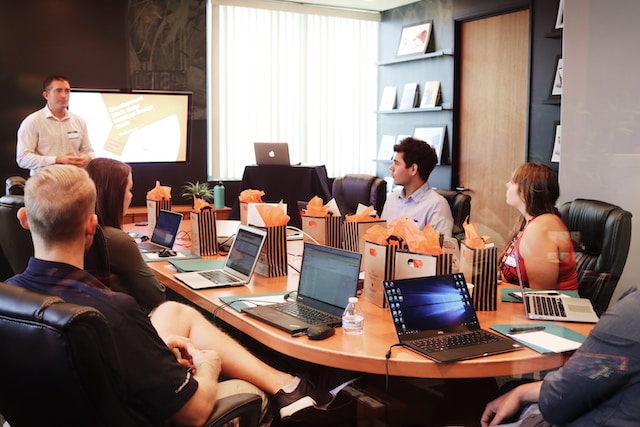- Home
- Resource Center
- Articles & Videos
- Setting Yourself Up for Success as a Vendor Manager
7 August 2023
Setting Yourself Up for Success as a Vendor Manager

Sign up for our newsletter on globalization and localization matters.
In my previous article I wrote about the importance of the Buyer Vendor Manager (BVM) function in the localization team, whether it’s a dedicated role or a collection of tasks that one person performs in addition to their regular duties.
So, if you’re the one chosen to perform the role of the BVM in your team, what’s next? And where do you start?
In this article I will talk about the overall steps a BVM would take in their new role, how to establish a healthy and productive relationship with their stakeholders, and how to encourage collaboration and teamwork among the teams.
Surveying the Scene
Whether your team is new or established, you will have some unique circumstances and challenges that you will have to work with, be it budget constraints, the type of content you’re working with, the physical location of those producing the source material, the organizational structure and processes, the speed and cadence at which the localization needs to be delivered, the specific needs of some of the internal stakeholders, the legal and regulatory requirements surrounding your work and so many other factors that you need to consider.
Your first step as a BVM should be to understand as many of these different factors and challenges as possible, as this will help you create the overarching strategy and prioritize the work you need to do.
The best way to do this is to interview and survey your stakeholders, both internally and externally. Asking them to provide you with their input on what’s working well, what’s not, and what they would like to see in the future, and it doesn't hurt if they can also offer some ideas and solutions for you: It would be foolish not to rely on the expertise of these professionals.
The results of these surveys will provide you with the most important element of your success, the only thing that will enable you to do your job properly, which is to know exactly what your teams need, without any assumptions or guesswork.
Granted, the answers you get might be something very general such as “We would like to improve quality or increase the efficiency of communication”. That’s totally fine, because you don’t need to dig in deep yet, you just need the general idea of what the team needs.
It’s also very important that these surveys are done individually to avoid getting similar results because people tend to agree with what others say. I believe it’s good practice that the surveys should be filled individually and that the results should be shared with everyone afterwards.
During this time, it would be of the utmost importance for you as a BVM to get thoroughly familiar with the workflows and processes of your team, lead a few localization projects or jobs yourself, get training by your colleagues if necessary, especially if you're new to the team. Just make sure that you get your own perspective on the process as well, and that your knowledge is not just theoretical.
Getting Ready
Now that you have a general idea of what needs to be addressed, it’s time to define and prioritize your tasks. One important thing to remember though is that you don’t have to get it right the first time, this is an iterative process that will change over time as each possible solution presents a new challenge that needs to be addressed, so take it easy and be agile.
Also, you don’t have to do this alone, in fact, you shouldn’t be doing it alone. Your stakeholders are your allies who are best equipped to tell you if a solution will work for them, and to offer insight into best practices and their unique needs. So, be collaborative and don’t be afraid to rethink your approach according to the feedback of your teams.
Planning is not just about what needs to be done, but it’s also about “where” you’ll do the work, “when” will it happen in relation to other tasks and “who” will execute and perform said tasks. The “where” is about the tools your teams will use to do their work and communicate, what will you use to track your work, to document your progress, to communicate regularly and to create your reports, among other things. The “when” is about your timelines and identifying dependencies, and creating a reasonable schedule for your tasks, while determining “who” will be responsible for the deliverables.
Of course, urgency and business needs will ultimately decide how quickly you’ll move from planning to executing, but don’t be afraid, when possible, to take your time during this phase to make sure all stakeholders are properly informed and onboarded, while addressing specific requirements in your plan. You will never be 100% ready for everything that will come up during the work: All you can do is prepare for what you know, and adapt to what you will learn.
One very important thing to keep in mind during this whole process is there is no one solution that will fit every situation, and no matter how prepared you are, you will be thrown some curveballs every now and then that will encourage you to adjust your plans and change your methods. That, I believe, is the most fun you can have on the job.
Do you want to contribute with an article, a blog post or a webinar?
We’re always on the lookout for informative, useful and well-researched content relative to our industry.

Kareem Alnassasg
I like two things about my job, the first is that it's in localisation and the second is that it allows me to interact with nice people on a daily basis. I fell in localisation by accident -like many of you- and I've been learning a ton of cool new things since then, my journey started as a lead of a fully remote Arabic localisation team, and aside from the obvious learnings about the localisation world and its challenges -specially for RTL languages-, I also learned a great deal about remote work, which I'm a huge advocate for.


